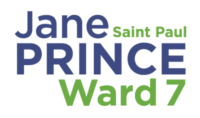(September 2016)
You might have seen the headlines in September that reported that the East Side has not gotten its fair share of capital investment by the City of Saint Paul. At the request of the East Side Neighborhood Development Corporation (ESNDC), the Center for Urban and Regional Affairs (CURA) at the University of Minnesota studied Saint Paul’s investment of CIB funds across the city over the past 10 years, and finds it is unequal across the city. Though the East Side includes 33 percent of city residents, the City has only invested 19 percent of its capital improvement bonds in our communities east of I-35.
CIB funds are used to invest in roads, reconstruction and repair of public facilities including recreation centers and public safety facilities. Since I joined the City Council in January, Ward 6 Councilmember Dan Bostrom and I have fought for the renewal, replacement and retention of public facilities that are needed now more than ever on Saint Paul’s East Side.
Early this year, we prevented the City Administration’s proposed relocation of a so-called “super medic” unit away from Engine 9 on the East Side, preserving vital emergency response resources for our community. Yet despite our efforts, Johnson Parkway, slated for reconstruction as part of the Saint Paul Grand Round, was delayed indefinitely. Highwood Hills Recreation Center has been permanently closed, and the soccer field promised to Highwood neighbors never opened this summer. The Margaret Playground CIB project has been delayed because the bids were too high.
Among the resource gaps on the East Side is the dearth of youth programming in the heart of Ward 7, since the closing of the Eastview Rec Center in 2008. Neighbors there are understandably frustrated that along with the closing of the building, the condition of the tot lot, tennis courts, basketball half court and playing fields is substandard. Crimes like drug dealing and home burglaries have seen an uptick, and gunshots this summer have the community on edge.
Some Eastview neighbors decided to take a field trip to the Merriam Park Center in early September, when they learned that the tot lot there was slated for replacement because it was ranked to be in the worst condition citywide. What they found there, on a Thursday evening, was a recreation center that was fully staffed, fully lit and fully occupied by neighborhood residents from toddlers to seniors. The tot lot, basketball half court, tennis court, skateboard park, gym and indoor facilities were all in use.
When they drove home to Eastview, there was no activity on the fields and facilities, because there were no lights, and the building was closed to the public as it has been since being leased several years ago to a private operator.
What the CURA study shows us is that along with the unequal capital investment across the city, the neighborhoods that benefit from the most investment also have the highest property values. As a consequence, property taxpayers west of Lexington are paying ever-higher taxes at increasingly unsustainable levels, while our East Side tax base, reflecting fewer investments in our public facilities, languishes.
When we add to that the fact that our East Side has some of the city’s largest concentrations of new immigrants, and neighbors challenged by poverty and unemployment, the City’s unequal investment is also inequitable. Children and families on the Eastside need good public recreation centers because they need quality, affordable, safe and accessible places to gather and play – just like neighbors enjoy in Merriam Park.
Now is not the time to accept the hand we’ve been dealt. The time is now for all of us to stand together and advocate for a stronger East Side.
